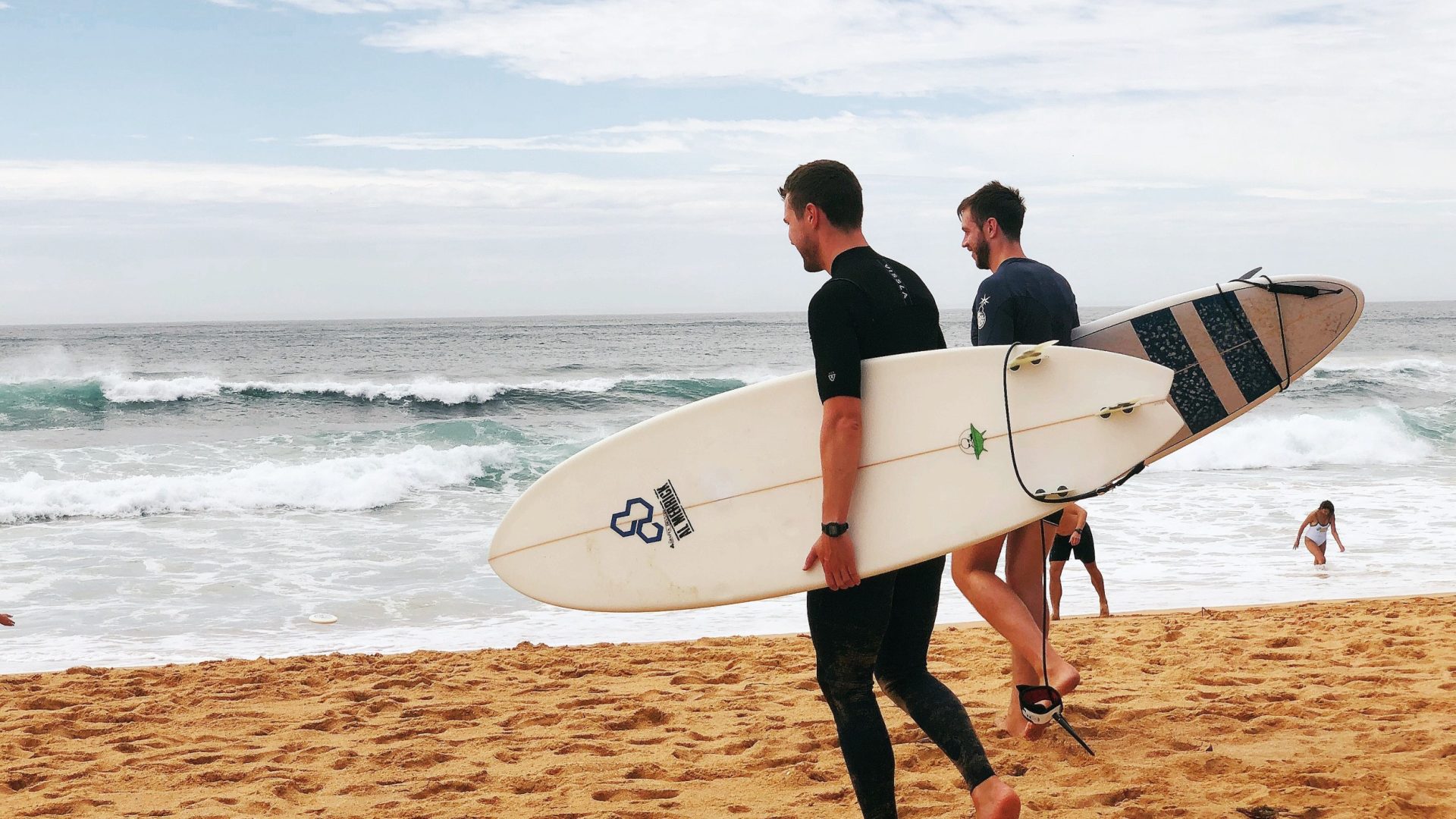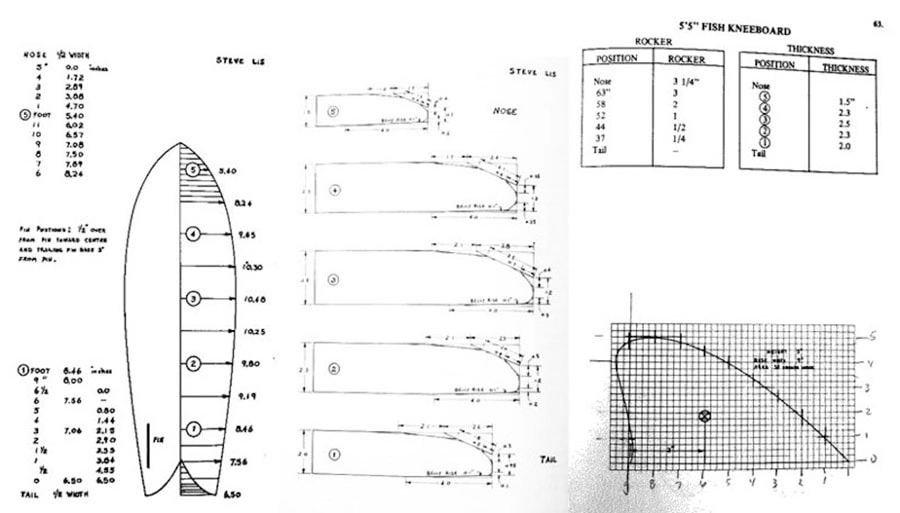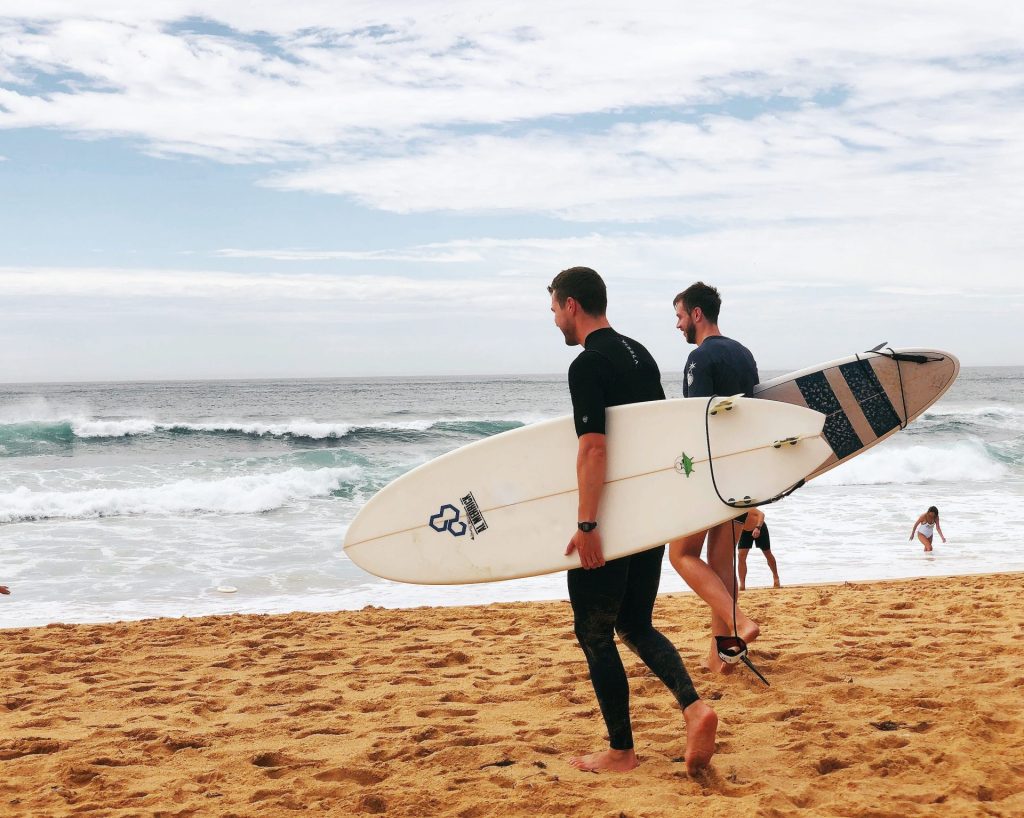What is a Fish Surfboard To Surfers?

I'm sure you've heard of a fish surfboard, you may of even used one!
But do you actually know what is a fish surfboard?
This article will explain the one of many surfboard types the fish surfboard, the best suited swell to use it in and what makes a fish surfboard a fish!
What Is a Fish Surfboard?
A fish surfboard is a type of surfboard known for its short, wide, and flat design, typically with a swallowtail shape. It's great for smaller waves and provides speed and manoeuvrability, making it a popular choice for surfers looking for a fun, fast ride.
Steve Lis designed the board in 1967 and it is now one of the most well known board shapes across the globe.
What is a Fish Surfboard Used For?
A fish surfboard is used for catching smaller, mushier waves that are typical on most days at your local beach break or even for making those less-than-perfect days more fun.
Fish surfboards are known for their versatility, making them a popular choice for a wide range of surfers. They have a few unique features that make them great for specific types of waves and riding styles.
A Brief History of the Fish Surfboard
- 1967: Steve Lis, a 16-year-old knee-boarder from San Diego, creates the fish surfboard by modifying a broken longboard, aiming to push his knee-boarding skills to the limit and ride La Jolla's reefs.
- Early 1970s: Steve Lis's fish design gains attention among professional surfers, and in 1972, surfers Jim Blears and David Nuuhiwa win first and second place at the World Championships in San Diego riding fish-inspired surfboards.
- Late 1970s: Australian surfer Mark Richards refines the fish design to be more performance-oriented, similar to shortboards of the era. MR wins four championship titles from 1979 to 1982 with his hybrid performance twin fin.
- 1980s: The popularity of the fish surfboard wanes as shortboard designs like the thruster take over the surf scene.
- 1990s: Renowned surfboard shaper Matt Biolos and others revive interest in fish and groveler designs, breathing new life into these surfboard styles.
This helpful video below explains the what is a fish surfboards history introduced by Steve Lis.
What is a Fish Surfboards Dimensions
Fish surfboards come in various dimensions, and these factors significantly affect their performance in the water.
When considering a fish surfboard, you need to pay attention to three key aspects: the width, shape, and size. Understanding these dimensions will help you choose the right fish surfboard for your skill level and the type of waves you want to ride.

What is a Fish Surfboards Width?
The width of a fish surfboard is one of its defining features. Fish surfboards are typically wider than other board types, giving them greater stability and making them well-suited for catching smaller, slower waves.
The extra width provides increased buoyancy, which helps you paddle more easily and maintain balance on the board.
This feature is perfect for beginners or intermediate surfers looking to have a more relaxed ride in less-than-ideal conditions.
What is a Fish Surfboards Shape?
The shape of a fish surfboard sets it apart from conventional short boards. Fish surfboards are characterised by their short, stubby shape with a wider nose and a distinct fishtail design.
This unique shape allows them to excel in smaller and weaker waves by generating speed and making quick, responsive turns.
The wider nose helps the surfer to paddle efficiently and catch waves early, while the fishtail provides excellent manoeuvrability, making fish surfboards incredibly fun to ride.
What is a Fish Surfboards Size?
Fish surfboard size varies, and choosing the right size is essential for your surfing experience.
These boards typically range from around 5 to 7 feet in length. Smaller fish surfboards offer more manoeuvrability, while larger ones provide stability and glide.
Your choice should depend on your skill level, wave conditions, and riding preferences. Bigger fish surfboards are excellent for beginners, while advanced surfers may prefer shorter models for high-performance surfing.
What is a Fish Surfboard Recommended Size?
Choosing the right size fish surfboard is crucial for optimising your time in the water. If you're a beginner, opt for a larger fish surfboard in the range of 6 to 7 feet, as it will offer more stability and make it easier to catch waves.
Intermediate surfers may want to consider a smaller board, typically between 5'6" and 6'4", for a blend of stability and manoeuvrability.
While advanced surfers often go for even shorter fish surfboards, around 5'4" to 5'8", to maximise performance in smaller, less powerful waves while having a ton of fun!

Fish Surfboard Sizing Chart
| Your Height (Feet) | Beginner | Intermediate | Advanced |
|---|---|---|---|
| 4'6" - 5'0" | 5'6" - 6'4" | 5'4" - 5'8" | 5'8" - 6'0" |
| 5'1" - 5'6" | 5'8" - 6'6" | 5'6" - 6'4" | 5'10" - 6'2" |
| 5'7" - 6'0" | 6'0" - 6'8" | 5'8" - 6'6" | 6'0" - 6'4" |
What is a Fish Surfboards Fin Setup
Fish surfboards and fins. Just like peanut butter and jelly, they're a perfect combo, and surfers around the world love the flexibility fish boards offer when it comes to fin setups.
Whether you're chasing that classic, loose feel or seeking more control and performance, your choice of fins can make all the difference. Fins are just one of many surfboard parts, here are some simple guidelines for navigating the fin options that'll help you ride the waves just the way you want.
- Most fish surfboards come with twin fins, but you can customize them to suit your style.
- Twin fins give you a loose, flowing feel, perfect for classic retro surfing.
- If you want more control and performance, use four fins, called a quad setup.
- You can even have five fins and switch between thruster, quad, or twin fin setups. Twin fins usually sit between the outer and inner fins on a quad.
What is a Fish Surfboards Preferred Wave?
When it comes to selecting the best waves for your fish surfboard, several factors play a role in ensuring an enjoyable and exciting ride. Let's take a look at the key elements that make a fish surfboard shine:
Fish Surfboard Wave Height: Fish surfboards are most suitable for smaller to medium-sized waves, typically ranging from knee-high to shoulder-high. These boards excel in these conditions, providing a lively and dynamic surfing experience.
Fish Surfboard Wave Type: Fish surfboards thrive in a variety of wave types. Whether you're riding small beach break waves, point breaks, or reef breaks, a fish surfboard can handle the challenge. Their manoeuvrability and speed make them a fantastic choice for most wave types.
Beach Break: If you frequent a beach break, where waves break over a sandy bottom, a fish surfboard is an excellent option. The board's ability to generate speed and make quick turns is perfect for catching waves in these conditions.
Reef Break: Fish surfboards are equally at home on reef breaks. Their agile nature allows surfers to navigate shallow reef areas with ease. You can enjoy the speed and responsiveness of a fish surfboard on these more challenging waves.
Types of Fish Surfboards
Fish surfboards come in a range of options to cater to surfers of all skill levels. Let's explore some of the best fish surfboard choices suitable for different abilities:
Performance Fish Surfboard
Advanced surfers looking for a high-performance fish surfboard should consider specialised models that emphasise agility, speed, and wave mastery.
Performance fish surfboards are designed for those who are comfortable in the water and want to maximise their surfing experience. These boards offer advanced features and responsiveness, allowing skilled surfers to push their limits and explore the full potential of a fish surfboard.
Best Fish Surfboard for Beginners
For beginners, choosing the right fish surfboard is essential to ensure a fun and successful learning experience. Fish surfboards for beginners are typically larger in size, offering stability and ease of use.
These boards are designed to help novice surfers catch waves early and maintain balance on the board. They are perfect for building confidence in smaller waves and gradually progressing to more challenging conditions.
If you are completely new to surfing you may want to try a foam fish surfboard, however when leaning to surf we recommend using a soft top foam board.
Foam Fish Surfboard
Foam fish surfboards are an excellent choice for beginners and surfers who want a user-friendly and buoyant option. These boards are made of soft foam materials, making them safe and comfortable for learners.
They offer great stability, making it easier to practice paddling and catching waves. Foam fish surfboards are the perfect entry point for anyone new to surfing.
Best Fish Surfboard for Intermediate
Intermediate surfers who want to enhance their skills and progress in the sport will find fish surfboards tailored to their needs.
These boards strike a balance between stability and manoeuvrability, allowing intermediate surfers to explore more dynamic waves. They provide room for skill improvement and can handle a variety of wave conditions.
Hybrid Fish Surfboard
Hybrid fish surfboards are versatile options that can accommodate a range of skill levels.
These boards combine the attributes of a traditional fish design with modern innovations, offering an excellent balance of stability and performance. Intermediate surfers who seek a responsive yet forgiving board will appreciate the benefits of a hybrid fish surfboard.
Whether you're just starting your surfing journey, looking for a high-performance experience, or seeking a board that can adapt to your evolving skills, there's a fish surfboard suitable for you.
These boards are renowned for their versatility, making them an excellent choice for a wide range of surfers and wave conditions.
Summing It Up: What To Do Now
So, there you have it - you now have a better understanding of what is a fish surfboard and which type of fish you will be suited to. If your planning to decorate your board, ensure you know what paint to use on your surfboard - very important!
If still unsure watch this 7 minute video explaining what is a fish surfboard for you visual learners.
If your interested in learning more about surfing discover our many guides that will inform you on your surfing journey. Don't forget to follow us on Facebook & Instagram to stay informed on our amazing surf shots and stories shared from surf creators around the world!
Frequently Asked Questions
Is it hard to ride a fish surfboard?
Riding a fish surfboard isn't hard, especially in small to medium waves. Its stability and paddle-friendly design make it accessible for surfers of various skill levels.
What is a fish surfboard like in big waves?
Fish surfboards are not typically designed for big waves, as they excel in smaller to medium-sized conditions. For larger waves, surfers usually opt for longer, more specialised boards.
What is a fish surfboard volume?
The ideal volume for your fish surfboard depends on your weight, skill level, and wave conditions. A general guideline is to choose a board with a volume that is 30-50% more than your weight in kilograms for optimal performance.
What is a fish surfboard compared to a short board?
The main difference between a fish surfboard and a short board lies in their design and performance. Fish boards are shorter, wider, and more stable, making them ideal for smaller waves, while short boards are more manoeuvrable and suited for bigger, powerful waves.
What is a fish surfboard difficulty to ride?
Fish surfboards are not hard to ride, provided the conditions match their design. They offer a fun and relatively easy ride in smaller to medium waves, suitable for a range of surfers.
What is a fish surfboard speed?
Fish surfboards are generally faster than traditional short-boards in small to medium-sized waves due to their design characteristics, such as a wider outline and increased planing surface.


